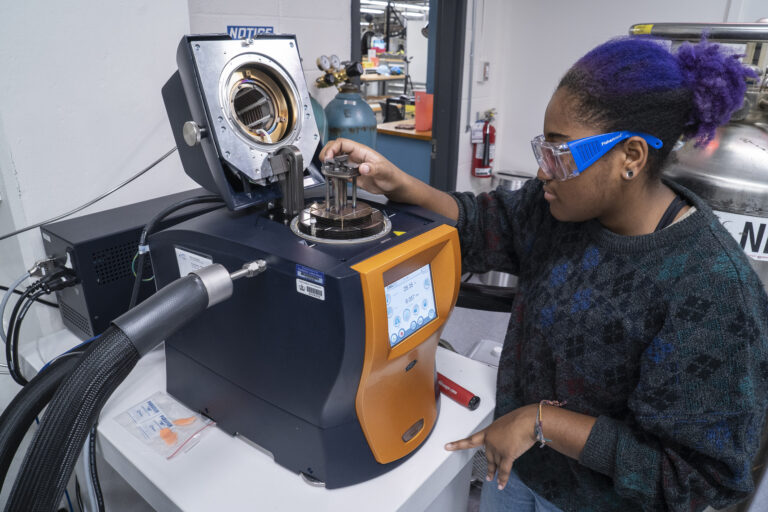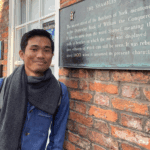
As a civil engineer, you have the power to shape the world. You can help grapple with challenges in sustainability and urban planning and come up with world-changing solutions. From designing smarter cities to crafting resilient infrastructure, civil engineering offers a rewarding path for those passionate about making a difference.
A master’s degree in this dynamic field can not only equip you with the advanced skills and knowledge sought after by top employers but also empower you to make a critical difference in people’s lives. With a civil engineering master’s, you can create a healthier, safer and more sustainable world. The world’s most celebrated civil engineers have advanced the design, manufacture and deployment of high-performance wind turbines; built affordable centrifuges for the speedy detection of diseases; and developed an innovative, off-grid facility to provide immediate, post-emergency services to citizens; to name just three.
Now, to join them, you only need to find the best school to give you the tools to be a civil engineering leader. We have three premier options for you:
Columbia University

The Carleton Lab at Columbia University is an state-of-the-art facility and integrated space where students learn through hands-on experience. Source: Columbia University
Graduates from the Department of Civil Engineering and Engineering Mechanics (CEEM) at Columbia University are fast becoming the world’s leading field experts. Equipped with a CEEM MS degree, these professionals are tackling some of the most pressing societal challenges today. From aging infrastructure and decarbonization to water scarcity and coastal resilience, they are pushing the frontiers of civil engineering to achieve a safer and more sustainable world.
Unlocking it all, the MS Civil Engineering and Engineering Mechanics program gives students the practical experience to launch an impactful career. Students can specialize in 13 concentrations spanning traditional fields such as Construction Engineering as well as more emerging disciplines like Computational Mechanics. Whichever concentration they choose, they get to tailor their education to their career goals and apply what they learn and gain industry insight through internships and research opportunities.
On campus, theory is applied in the Carleton Laboratory. Open to students, researchers, and faculty, this state-of-the-art lab and integrated space for teaching and research is where students learn the functionality and practical use of testing machines through hands-on lab classes. There are also opportunities to participate in field deployments such as drone-based LiDAR surveys and vibration instrumentation. This unparalleled access not only exposes students to modern experimental approaches, but also prepares them for the professional world.
With over 65% of its students drawn from 30 countries worldwide, the CEEM community is uniquely international. This melting pot creates a diverse, global environment reflective of the civil engineering world. Developing connections with peers and the wider community across Columbia University opens even more doors to careers across the globe — as does the once-in-a-lifetime chance to live and learn in New York City.
Serving as a living laboratory, NYC is home to some of the most influential civil engineering, construction and consulting companies. This location makes it all the easier to land summer internships and build industry connections. For MS graduates, this level of exposure is enviable, paving their way to diverse career paths spanning civil, mechanical, biomedical, automotive, and aerospace engineering. They’re set to join past graduates who have secured positions at the likes of Boeing, Tesla and SpaceX or pursued further study at some of the world’s top universities. Apply to the Department of Civil Engineering and Engineering Mechanics today.
The University of Texas at Austin

Department of Civil, Architectural, and Environmental Engineering’s graduate programmes prepare students to be at the forefront of industry, academia, civil service, and beyond. Source: University of Texas at Austin/Facebook
Considered one of the most extensive departments in the US, The University of Texas at Austin’s Fariborz Maseeh Department of Civil, Architectural and Environmental Engineering (CAEE) offers 10 graduate specialities. With over 1,200 undergraduate and graduate students and 50 faculty members, you will enjoy a 22:1 student/faculty ratio. This community is tight-knit and unified in its mission to change the world through engineering.
“What we do has become important and challenging as the world population grows in the face of expanded urbanisation, limited resources and changing climatic conditions,” says Robert B. Gilbert, department chair. “We are leading major changes in energy, transportation, water management and treatment, sustainable construction and materials, and information technology.”
The department’s graduate programmes span the following areas of study: Building Energy and Environments, Construction Engineering and Project Management, Environmental and Water Resources Engineering, Geotechnical Engineering, Infrastructure Materials Engineering, Mechanics, Uncertainty and Simulation in Engineering and more.
The CAEE focuses on solving issues surrounding the nexus of cities, water and energy demand that engineers have increased breadth and depth of knowledge. In your master’s programme, you will develop the know-how and the teamwork skills necessary to innovate solutions, technologies and sustainable systems. There are also many research centres which you can explore with access to state-of-the-art facilities.
Student organisations enrich your education and experience here. There’s no shortage of opportunities to meet other students, interact with professional engineers, serve the greater community and work on challenging projects. For example, the oldest professional engineering society in the country, American Society of Civil Engineers, has a UT Austin Chapter that organises a wide range of activities, including bi-monthly meetings, social events, community volunteering, intramural sports, field trips and technical competitions.
University of California, Berkeley

UC Berkeley’s College of Engineering consistently ranks among the top engineering schools in the nation and the world. Source: University of California, Berkeley Facebook
The College of Engineering at UC Berkeley is ranked among the top three engineering schools in the world. Dynamic, interdisciplinary and hands-on education — programmes here challenge conventional thinking and emphasise creativity and imagination. Most importantly, it’s a community of researchers, students and faculty members who are driven by social commitment and want to change the world.
At the Department of Civil and Environmental Engineering (CEE), one can find cutting-edge research to find engineering solutions for societal-scale challenges. This allows researchers to introduce new theories and improve understanding in an experiential manner, as well as provide students with the updated tools and techniques needed for solving current problems.
With some of the best laboratories for teaching and research in the US and a location in the San Francisco Bay Area, to study here is to have numerous exposure to engineering projects as well as professional opportunities.
One in every four undergrads in this department progresses to graduate school – making it one of the highest percentages in the College of Engineering. Others progress into a myriad of career paths, thanks to their skill set gained here to address the many pressing needs to improve and expand the infrastructure and protect the environment.
“The CEE department at UC Berkeley has been my haven for exploration and growth,” says student Jacob Ahmed. “The hands-on nature of the construction programme has allowed me to delve into real-world projects, from managing construction sites to developing cost-effective and sustainable building solutions.”










